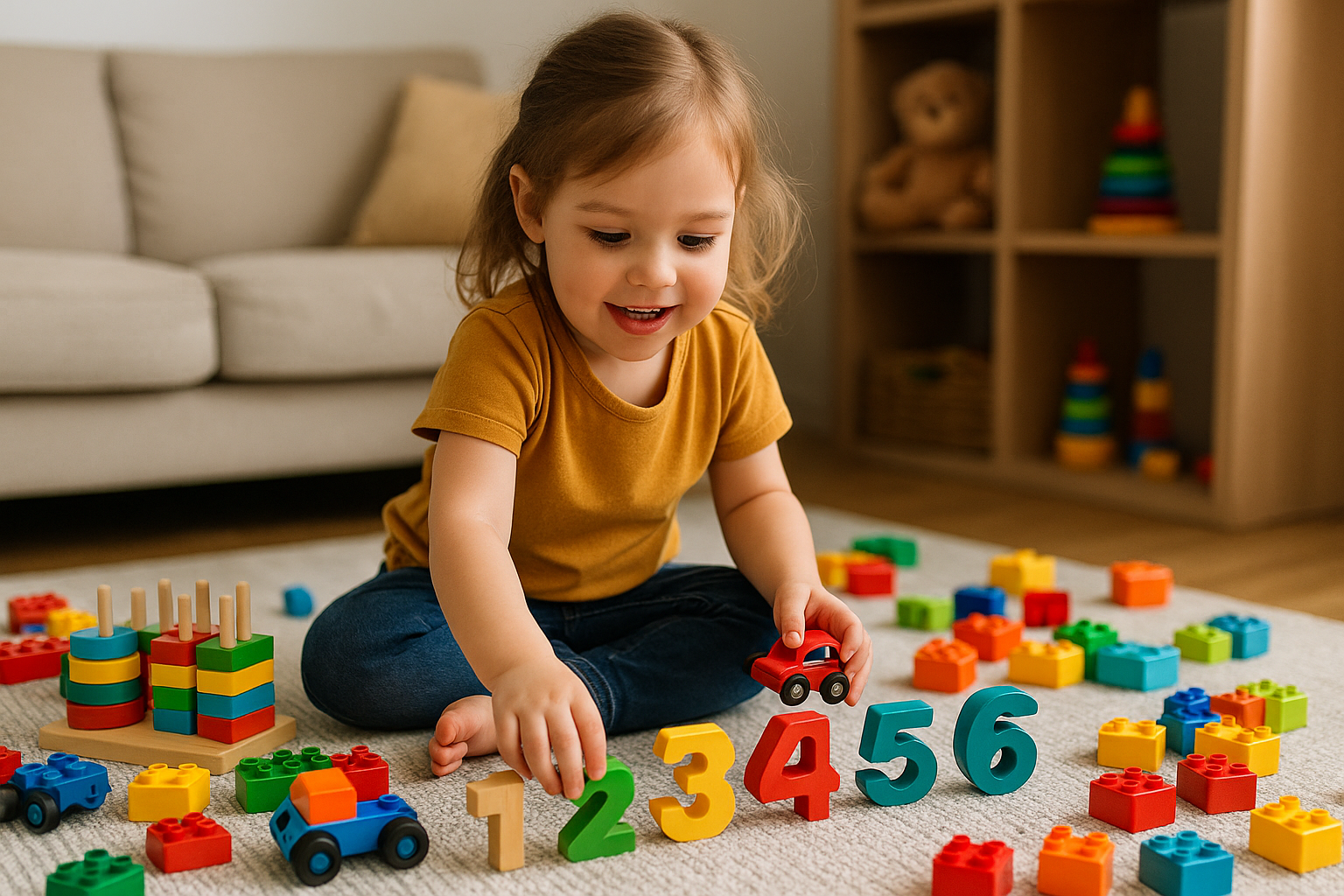Math doesn’t have to mean flashcards and worksheets. In fact, one of the most effective and enjoyable ways to teach early math concepts is through play—especially with toys children already love. From building blocks to cars and dolls, everyday playthings can be transformed into powerful tools for learning numbers, patterns, shapes, and problem-solving.
In this article, you’ll discover how to teach math naturally at home using toys and playful routines for children ages 2 to 6.
Why Toys Work for Teaching Math
Toys engage children’s imagination, attention, and movement—all essential elements of early learning. When children are playing, they are:
- Exploring quantities and spatial relationships
- Comparing sizes, lengths, and groups
- Sorting and classifying
- Learning through trial and error
- Practicing persistence and patience
Using toys to teach math builds a strong foundation while making learning fun and memorable.
Math Skills That Can Be Taught Through Play
Here are some key skills that can be naturally introduced:
- Counting and one-to-one correspondence
- Number recognition
- Patterns and sequences
- Sorting and classifying
- Shapes and geometry
- Measuring and comparing
- Simple addition and subtraction
- Problem-solving and logical thinking
Everyday Toys That Teach Math
1. Building Blocks (e.g., LEGO, wooden blocks)
Math concepts:
- Counting pieces
- Comparing lengths and heights
- Grouping by color or size
- Creating patterns
- Estimating and measuring
Activity idea: “Let’s build a tower with 10 red blocks. How many more do we need?”
2. Toy Cars or Trains
Math concepts:
- Sorting by color, size, or type
- Sequencing by number or order
- Counting laps or vehicles
- Graphing favorites
Activity idea: Race two cars. “Which one went farther? Let’s measure with string!”
3. Dolls or Action Figures
Math concepts:
- Comparing sizes (tallest to shortest)
- Creating families (grouping)
- Using props to set up pretend stores (counting coins, prices)
Activity idea: “Let’s make dinner for 4 dolls. How many plates do we need?”
4. Stuffed Animals
Math concepts:
- Role-playing shopping, sorting, or classifying
- Matching sizes and weights
- Creating “animal graphs” (which animal do you have more of?)
Activity idea: Line them up from smallest to biggest.
5. Puzzles and Shape Toys
Math concepts:
- Recognizing and naming shapes
- Visual-spatial skills
- Matching pieces by color or size
- Problem-solving
Activity idea: Time how long it takes to complete a shape puzzle, then try to beat the time.
Specific Math Activities Using Toys
Toy Store Setup
Create a pretend toy store:
- Use price tags (1–5 coins)
- Use play money or tokens
- Let your child “buy” and “sell” toys
Skills: Counting, adding, making change, value recognition
Roll and Build
Use a die and blocks or LEGOs:
- Roll the die and add that many blocks to your structure.
- Compete to see who builds the tallest tower.
Skills: Number recognition, counting, comparing quantities
Color Sorting Game
Give your child a basket of mixed toys (cars, blocks, figures) and colored containers.
- Ask them to sort by color.
- Then sort by size or category.
Skills: Sorting, classifying, critical thinking
Pattern Train
Line up toys to create color or size patterns:
- Red car, blue car, red car, blue car…
- Big bear, small bear, big bear…
Ask your child to continue or correct the pattern.
Skills: Sequencing, pattern recognition
Stuffed Animal Picnic
Invite 5 stuffed animals to a “picnic.”
- Set a plate, cup, and spoon for each.
- Ask, “If we invite 2 more, how many plates do we need now?”
Skills: Counting, adding, logical reasoning
Use Language That Builds Math Thinking
During play, use math-rich vocabulary:
- “How many?”
- “What comes next?”
- “Can we sort these?”
- “Is this longer or shorter?”
- “How many more do we need?”
Asking questions encourages children to explain and explore their ideas.
Keep It Child-Led
Let your child choose the toy and follow their interests. Then find ways to weave math into the play:
- If they love dinosaurs: “How many dinosaur eggs can we hide?”
- If they love trucks: “Can we measure how far the truck goes?”
- If they’re drawing: “Let’s count the shapes in your picture!”
Your role is to guide, not control.
Make It Routine
Try these playful math routines:
- Morning: Count steps to the kitchen
- Meal time: Count fruit slices or crackers
- Bath time: Pour water with measuring cups
- Bedtime: Count stuffed animals or stars
Small, daily moments build lasting math habits.
Wrapping Up: Play Is the Best Math Teacher
You don’t need a formal curriculum or fancy tools to teach math at home. Toys your child already loves are more than enough—when paired with curiosity, intentional questions, and meaningful interactions. By turning everyday play into math-rich experiences, you’re helping your child build confidence, problem-solving skills, and a joyful relationship with numbers.
Let the toys do the teaching—and the learning will follow.
